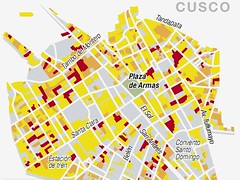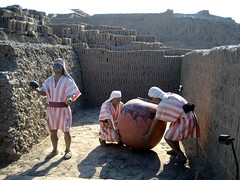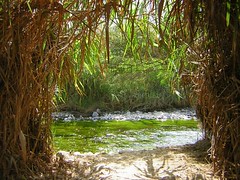Birdwatching in Peru
Peru is known to be one of the best places in the world to see birds; it has the second highest number of species on earth. 1800 in fact, making it a bird-watchers paradise.
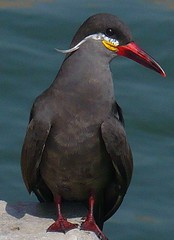 I’m not a bird-watcher and probably won’t ever be, but during my time in Peru I have come to understand how someone could have such a keen interest. Many birds here are simply beautiful, even those in and around cities. I’ve seen humming-birds, large birds of prey, brightly coloured red birds, brightly coloured yellow birds and various parakeets and small parrots. I don’t know all their names, but I do know that by seeing such creatures on a daily basis, in the wild and without even trying, there are plenty of people who will be envious of me.
I’m not a bird-watcher and probably won’t ever be, but during my time in Peru I have come to understand how someone could have such a keen interest. Many birds here are simply beautiful, even those in and around cities. I’ve seen humming-birds, large birds of prey, brightly coloured red birds, brightly coloured yellow birds and various parakeets and small parrots. I don’t know all their names, but I do know that by seeing such creatures on a daily basis, in the wild and without even trying, there are plenty of people who will be envious of me.
If all these hundreds of birds were not enough, it has recently been announced that Peru is moving in to be the world leader in numbers of bird species. More species are being discovered each year in the depths of the jungle, meaning Peru is, or is about to move into first place beating Colombia. In the last 30 years alone, the official number of bird species in Peru has risen by more than 200. More amazing still is that of the roughly 1800 bird species, about 400 have various subspecies, taking the total number of bird types in Peru to over 2800! Try and spot all of those!
Economically, Peru has been reaping the benefits of this for decades. Many tourists arrive here with majestic Condors and the Macaws at mud-licks high up on their list of must-sees. Peru has also begun actively promoting its avian treasures with its website www.perubirdingroutes.com.
There are various routes a tourist could take across the country to see distinct types of birds. Little by little areas along each one of these are improving their infrastructure and protecting bird species to offer birdwatchers the best possible experience. Here I lay out the three biggest and best routes to take, following the advice of expert Beltrán de Ceballos director of the Spanish ornithology and conservation group Plegadis.
A. The North
Tumbes, Piura, Chiclayo, Jaen, Cajamarca, Chachapoyas, Moyobamba, Tarapoto and Iquitos are the cities that form the large northern route. This is the part of the country richest in bird species.
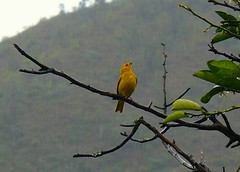 The Zarumilla reserve in Tumbes and its mangrove forests make and excellent start. As well as an opportunity to see all kinds of wildlife such as anteaters, the reserve boasts over 100 species of birds. The Ecological Reserve of Chaparrí near Chiclayo further south is a place any nature lover would fall in love with. Upon arriving you will be surrounded by birds, spectacled bears and foxes, many of which totally relaxed in human presence. Chaparrí, always basking in sunshine, is the most important dry-forest in Peru.
The Zarumilla reserve in Tumbes and its mangrove forests make and excellent start. As well as an opportunity to see all kinds of wildlife such as anteaters, the reserve boasts over 100 species of birds. The Ecological Reserve of Chaparrí near Chiclayo further south is a place any nature lover would fall in love with. Upon arriving you will be surrounded by birds, spectacled bears and foxes, many of which totally relaxed in human presence. Chaparrí, always basking in sunshine, is the most important dry-forest in Peru.
According to Beltrán, the hikes and waits at the prime birdwatching locations can take hours. Birdwatchers occupy a single concentrated space and wait, not knowing what they might see, not knowing what species of birds are going to show themselves that day. What does show up though, is guaranteed to be marvelous. Through the binoculars, thousands of birds of all colours dance before your eyes. Smiles stay stuck on the observer’s faces through the entire day, the images they are seeing imprinted on their memories forever.
Continuing through the mountains of Cajamarca, into the cloud forests of Amazonas and San Martín, and jumping by plane to the low-laying forests of Loreto, birdwatchers can expect more of the same. More birds than they have time to identify. (See Travel section for details on reserves to visit)
Special mention must be made here for the Marvelous Spatuletail, a rare and mysterious hummingbird that only exists in one valley, Rio Utcubamba, in the region of Amazonas.
B. Centre
 The central birding routes are the least known in the country, and the least promoted. On this route, along the coast, we find the desert oasis of Lomas de Lachay and its many birds, the Pantanos de Villa and the island of San Lorenzo which is only minutes by boat from Callao.
The central birding routes are the least known in the country, and the least promoted. On this route, along the coast, we find the desert oasis of Lomas de Lachay and its many birds, the Pantanos de Villa and the island of San Lorenzo which is only minutes by boat from Callao.
Climbing into the Andes via the carretera central we arrive at the Andean Lake Junín and the Amazonian areas of Chanchamayo and of Satipo.
Around Lake Junín you will find the Junín National Reserve, covering 53,000 hectares at 4100 masl (13.448 fasl). The reserve is home to numerous birds, such as speckled teal ducks, yellow-billed pintail ducks, Andean geese, cattle egrets, moorhens, gulls, herons, flamingos, puna ibises and white grebes. Various species of frogs and mammals like the Andean fox, the skunk, and the vizcacha have also been registered.
Taking a different route into the mountains we can visit the national park of Huascarán and the Callejón de Huaylas. There are many vast areas to visit and explore.
C. South
Thanks to conventional tourism, the south is by far the most developed, with the best infrastructure for tourists, and with many species of birds in varied climates, it is a birdwatchers dream.
There are excellent places to observe birds in Arequipa, Puno, Cusco, Apurímac, Ayacucho, and in the jungles of Madre de Dios. There is the reserve of Paracas, the oasis of Huacachina, the Colca Canyon, Lake Titicaca, the Machu Picchu reserve, the Urubamba valley, the Manu biosphere and the Tambopata reserve.
Tags: animals, birdwatching


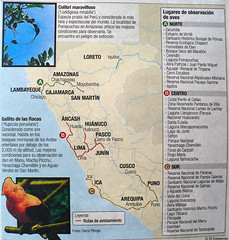



![Destruction of Lima’s architectural heritage [Featured]](http://farm4.static.flickr.com/3160/2691988362_279cb28028_m.jpg)

